April 25th 2023, El Paso.
From a distance, it looks like a thin and very straight black line sitting on the horizon. On this side of it, the Texas side that is, the land is pancake flat farm land. On the other side, the Mexican side, the land is mostly scrub and rises behind the line fairly quickly into some low lying hills. The line is a very distinct thumbnail dark scar etched between the land and the sky.
I turned off Interstate 10 maybe a dozen miles east of El Paso. I10 runs from New Orleans in Louisiana, west across Texas, through New Mexico and Arizona and right up to Los Angeles in California — a reminder of the huge size of the Unites States and how roads are built to traverse what is an entire continent. I had left Texas Hill Country and headed west and then south, to Big Bend National Park, so called because the mountain range that is the park forces the Rio Grande river to curl around it — making a big bend in the shape of the river’s passage.
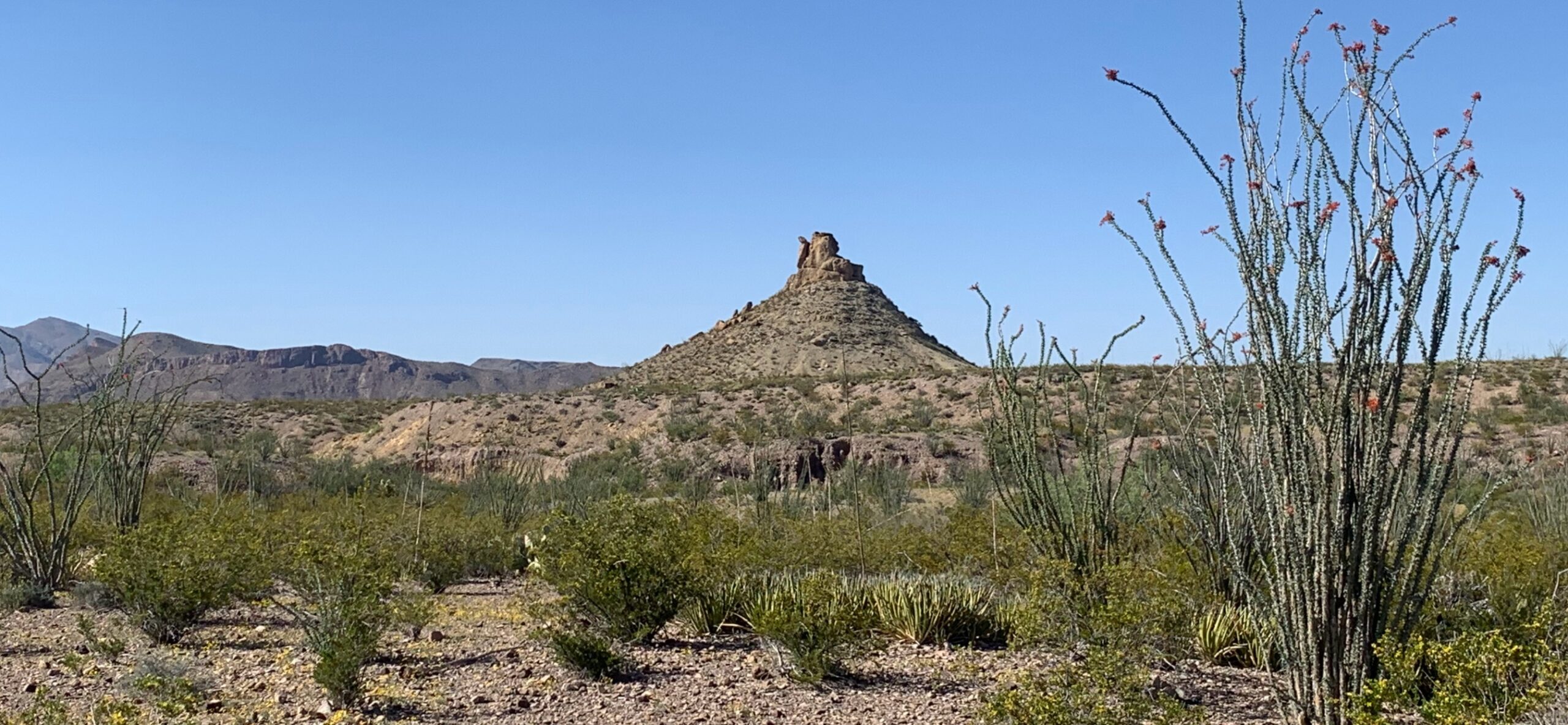
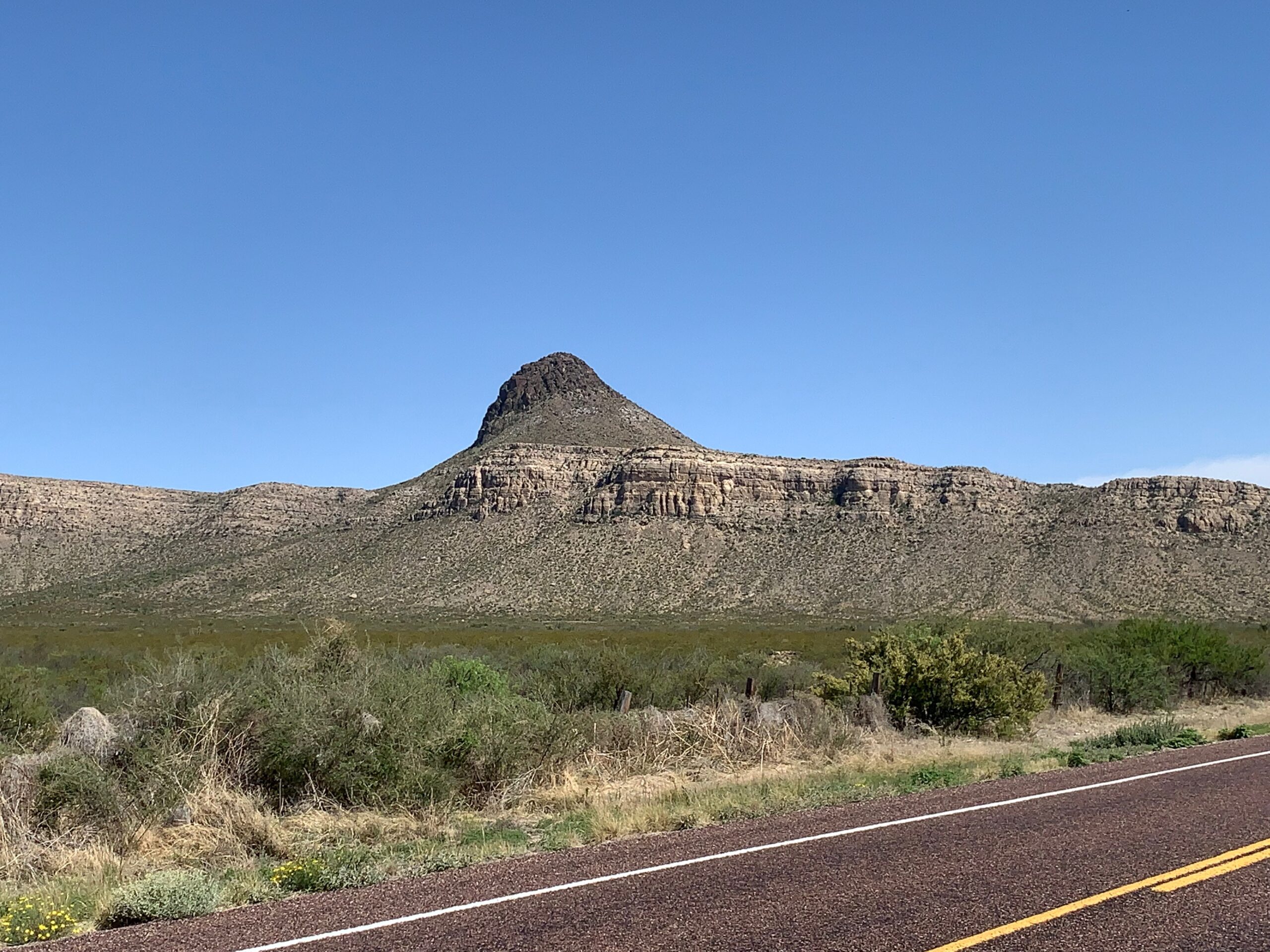
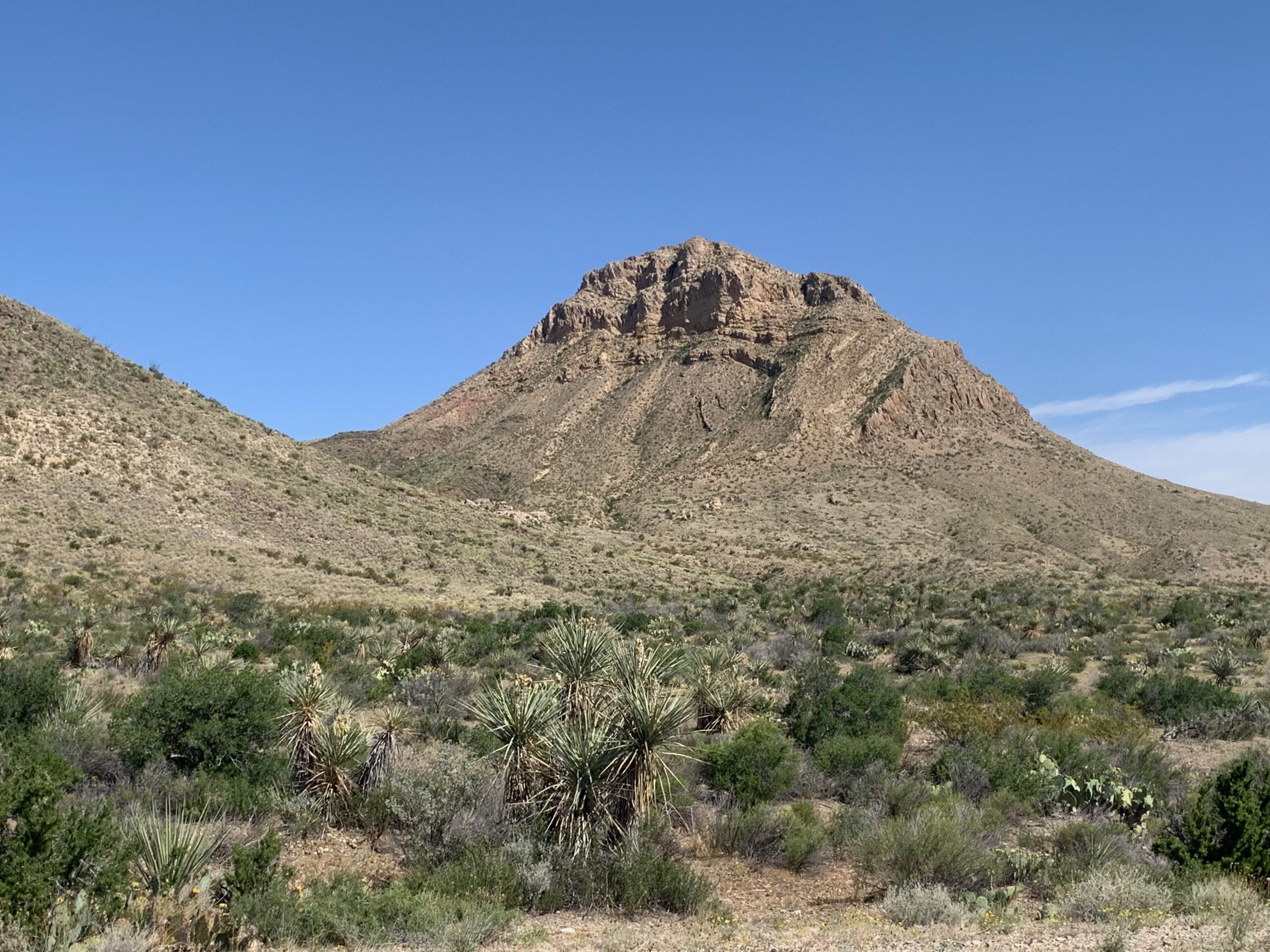
Big Bend is real Wild West country — flat land, at times pure desert, at other times just parched landscape with some shrubs and stunted trees hanging on for dear life. And then, very regularly, rising from the plain are tabletop mountains, just like the ones you seen in the western movies. They rise, seemingly out of nothing. Their upper sides are straight, either sandstone or basalt I think, rising to table-top plateaus. The lower sides are cascade slopes of scree, rocks and rubble broken off the central core of the mountain by the heat and tumbling down to the plain.
You expect at any moment any number of characters, but chiefly John Wayne or Clint Eastwood, to appear at the head of a straight line of dust thrown up as they ride across the landscape. Having ridden through the park at dusk and then camped at a fairly miserable RV (Recreational Vehicle) park just outside it in Study Butte (pronounced Stoody Butte) next morning I took a look at Terlingua Ghost Town. How could you not follow the signs to such a place? Before leaving the RV park I noticed a weird thing just by where I camped for the night: a DIY graveyard, the last resting place of Ron Willard (1929-2002), Lawrence P Harris Jr, Sgt US Marine Corps Korea, August 26 1943 – June 27 2001 among a hand full of others. The graves were marked by stones and plastic flowers and beside them, sitting in two camping chairs were a set of plastic skeletons and a skeleton dog. Weird indeed.
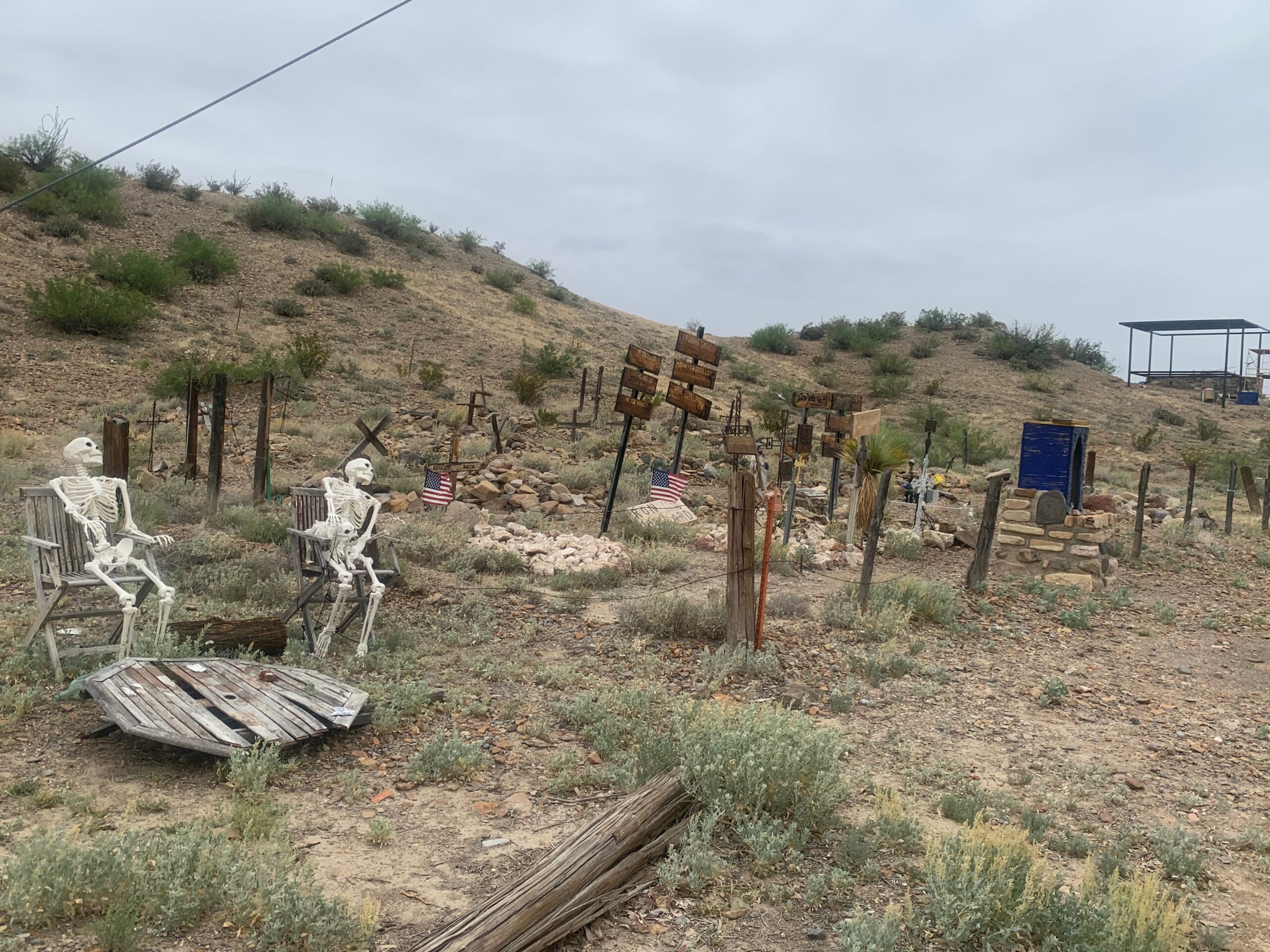
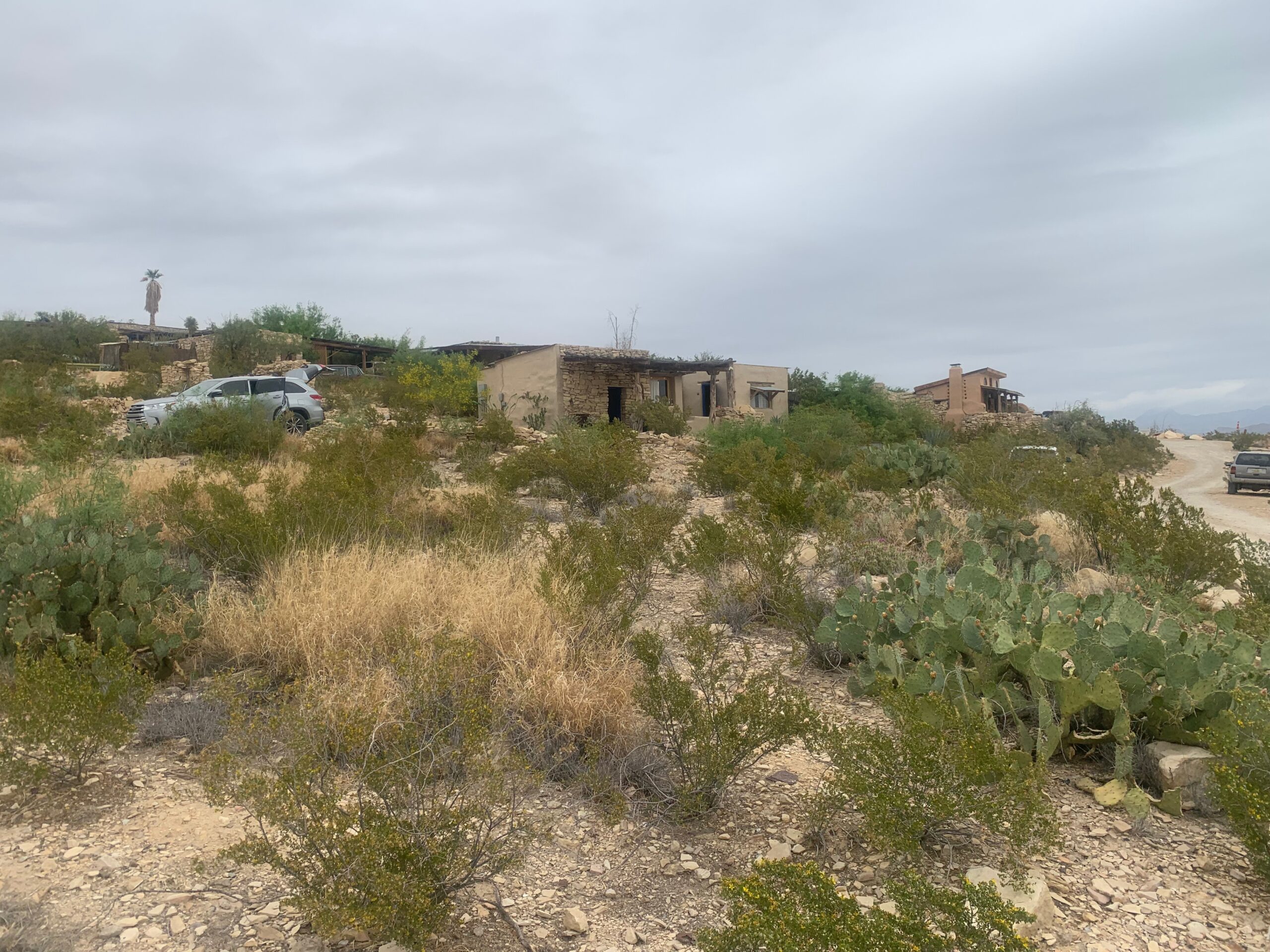
Terlingua Ghost Town turned out to be a really odd mixture of tumble down stone rubble homes, some of them rebuilt into glam weekend break cottages, and a scattering of RVs, some of them wrecks, others vast mobile homes on wheels the size of touring coaches. And among all of that were art galleries and souvenir shops selling cowboy and Indian tat (lots of dream catchers) and trendy cafes. You could sit there, looking out over the Wild West-cum-RV landscape while your vanilla latte was prepared. . .
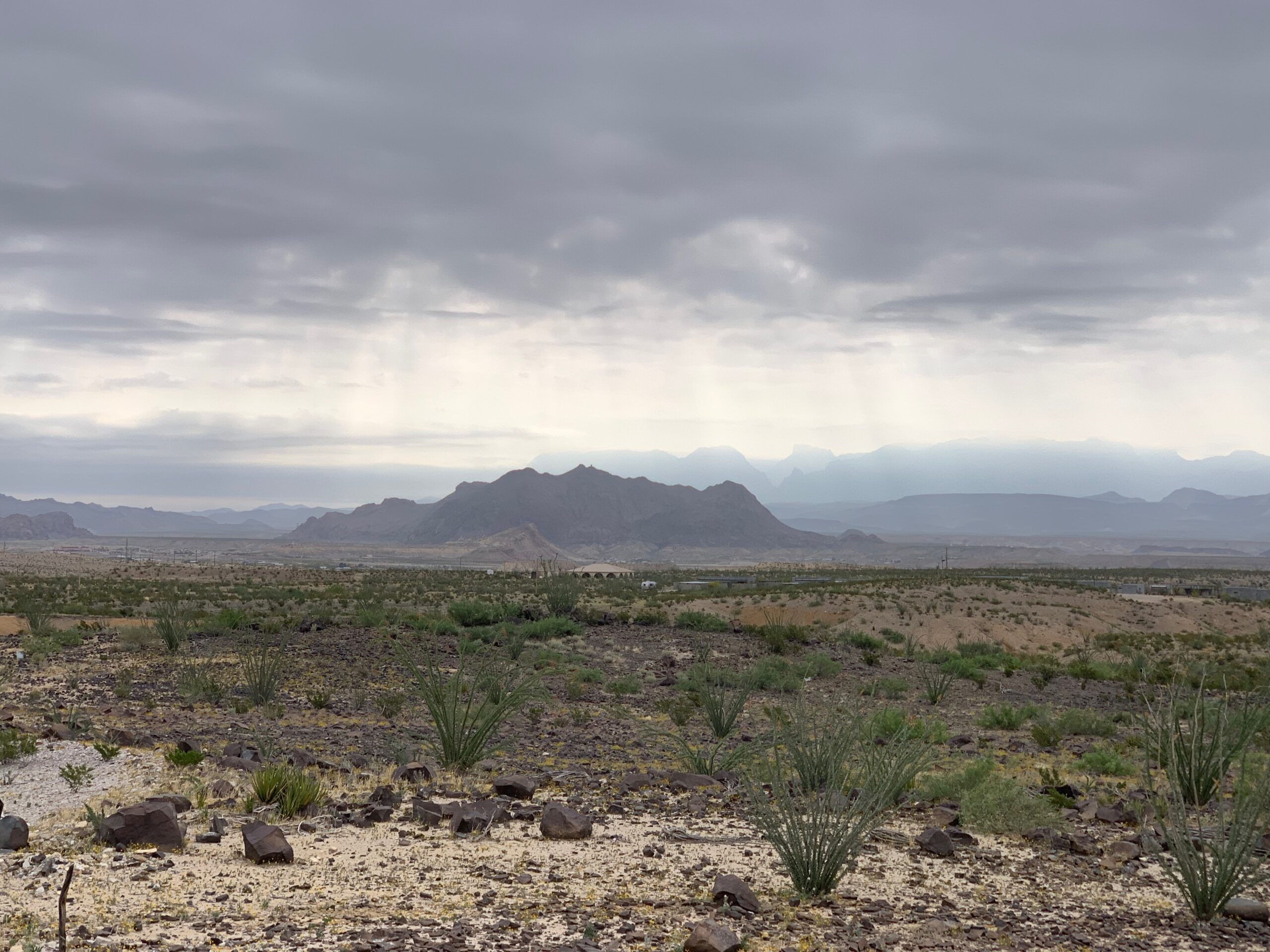
I rode on across more flatland desert, another biker in my rear view mirror, following and not making any effort to pass, until I got to Alpine. There he and I had breakfast in Magoo’s Place, a breakfast diner packed on a Sunday morning. Jason Espinosa (52) from San Antonio was on a lone ride on his Suzuki V Storm 650 , taking a few days out from his life as a malware problem solver, a job that helps for his great love — playing guitar with his C&W band, Wild Country. After a good chat and lots of coffee, we went our separate ways, him back towards Hill Country and me on to Marfa.
Poor old Marfa — a cute little place, another Texan crossroads town with a grand official building in a central square, that life just passed by. But several other buildings make it a place well worth visiting. There is the Brite Building from 1931, an Art Deco gem that reminded me of the Hoover Building in Ealing, London, though on a much smaller scale. Opposite it was the West Texas Utilities Company, which looked abandoned though not falling down. And there was the Palace, an empty Art Deco theatre/cinema in need of a lot of TLC.
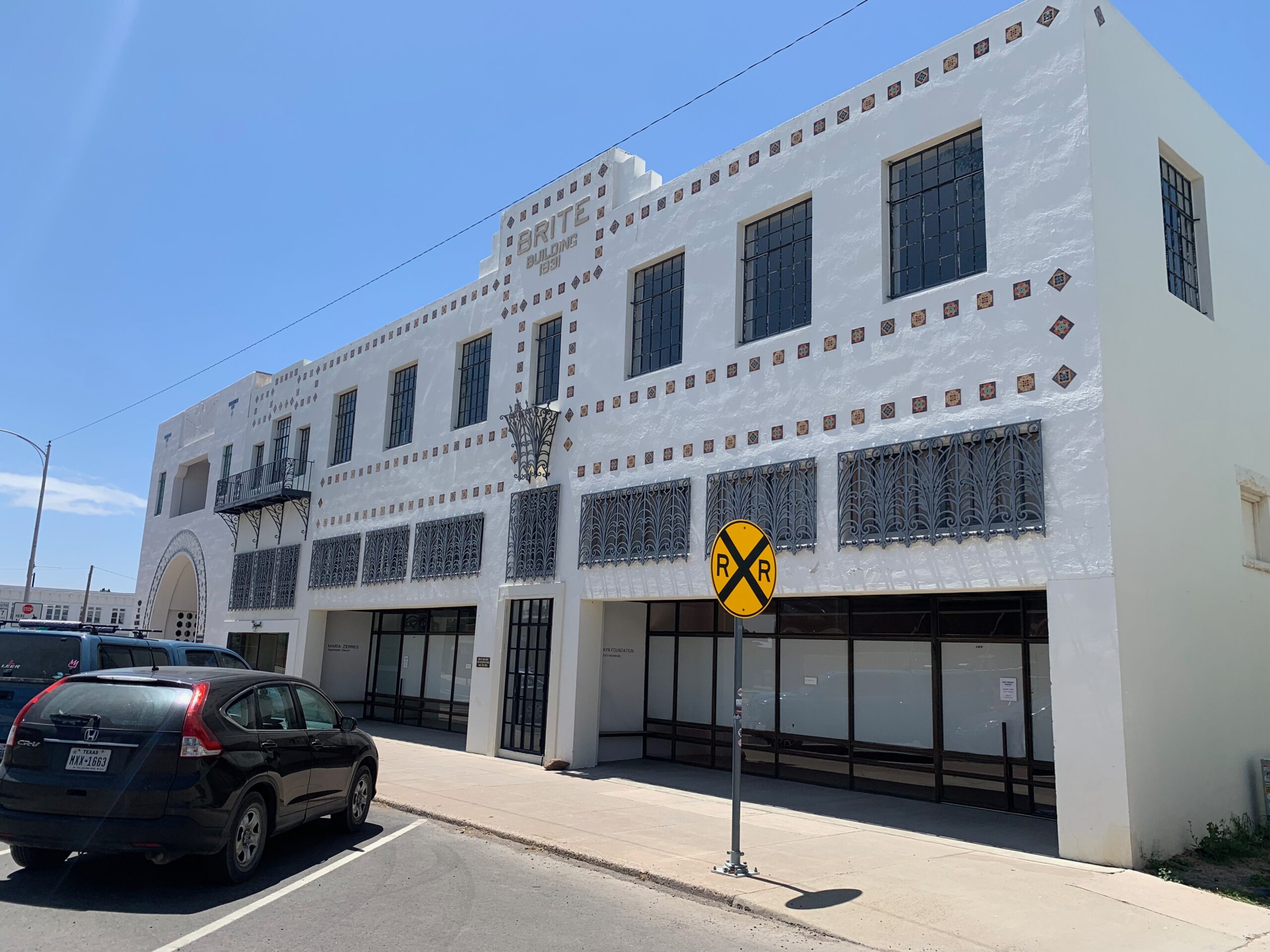
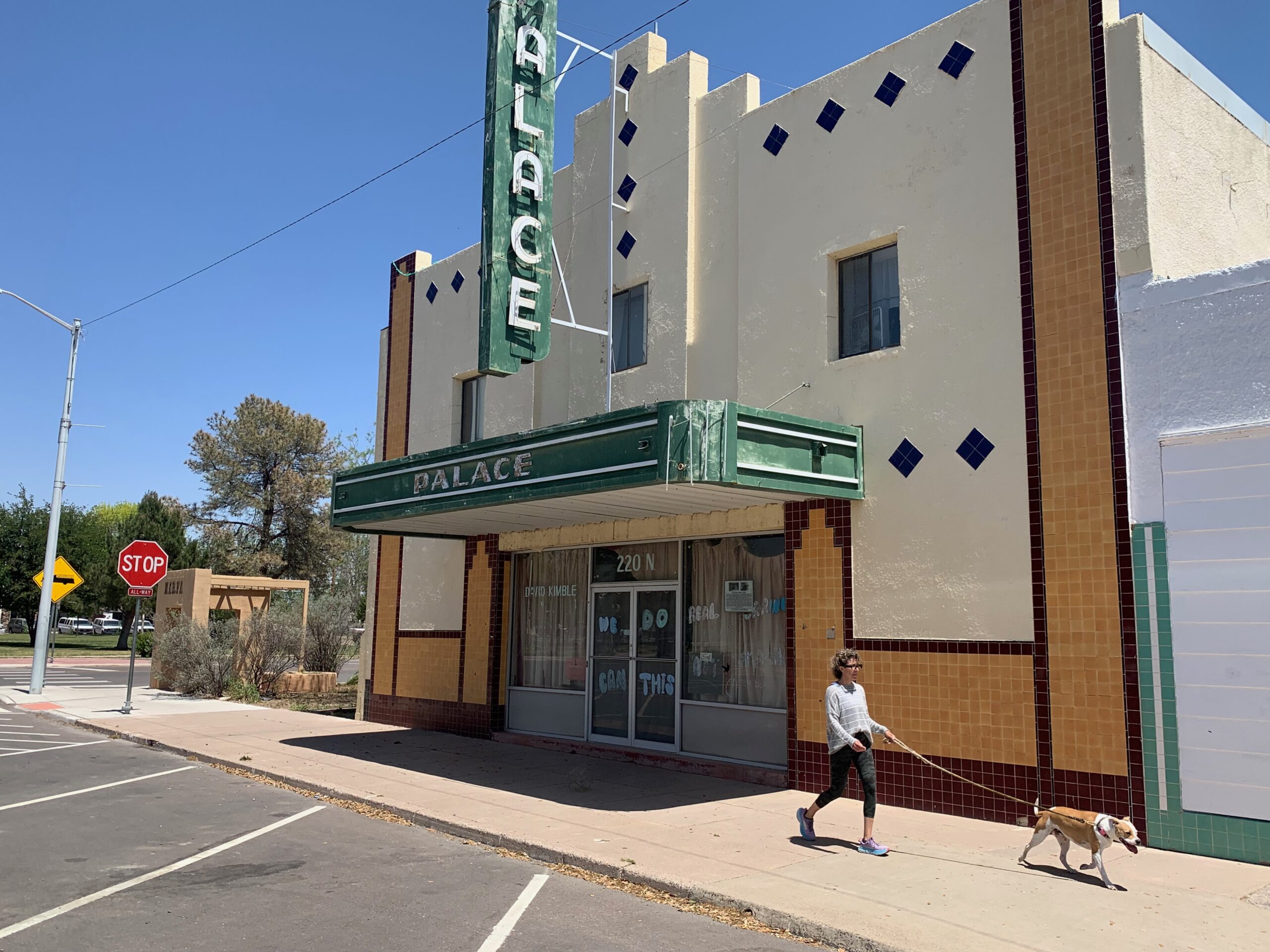
But the gem of the town is The Hotel Paisano, a purpose built, Spanish courtyard style hotel finished in 1930.
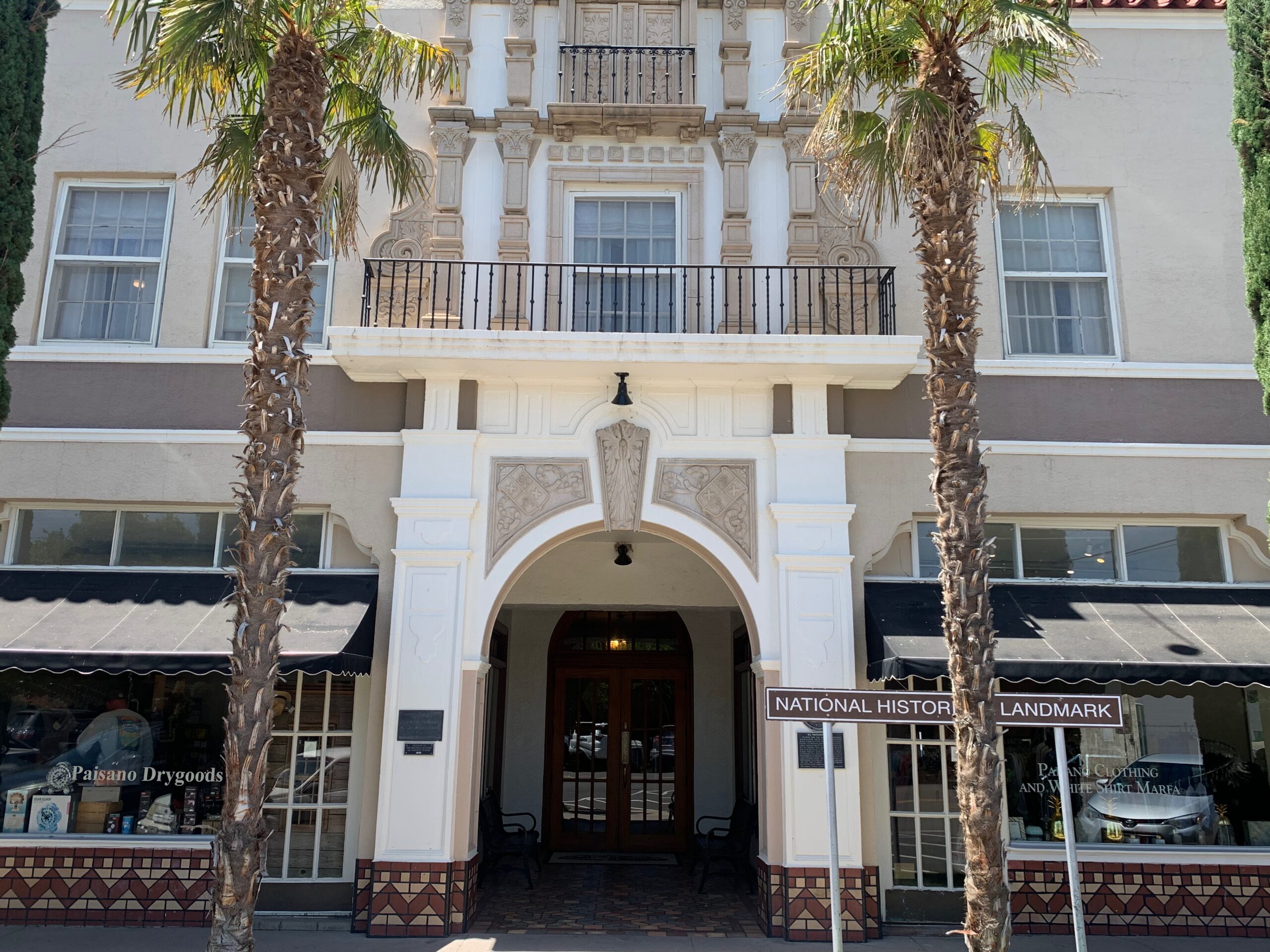
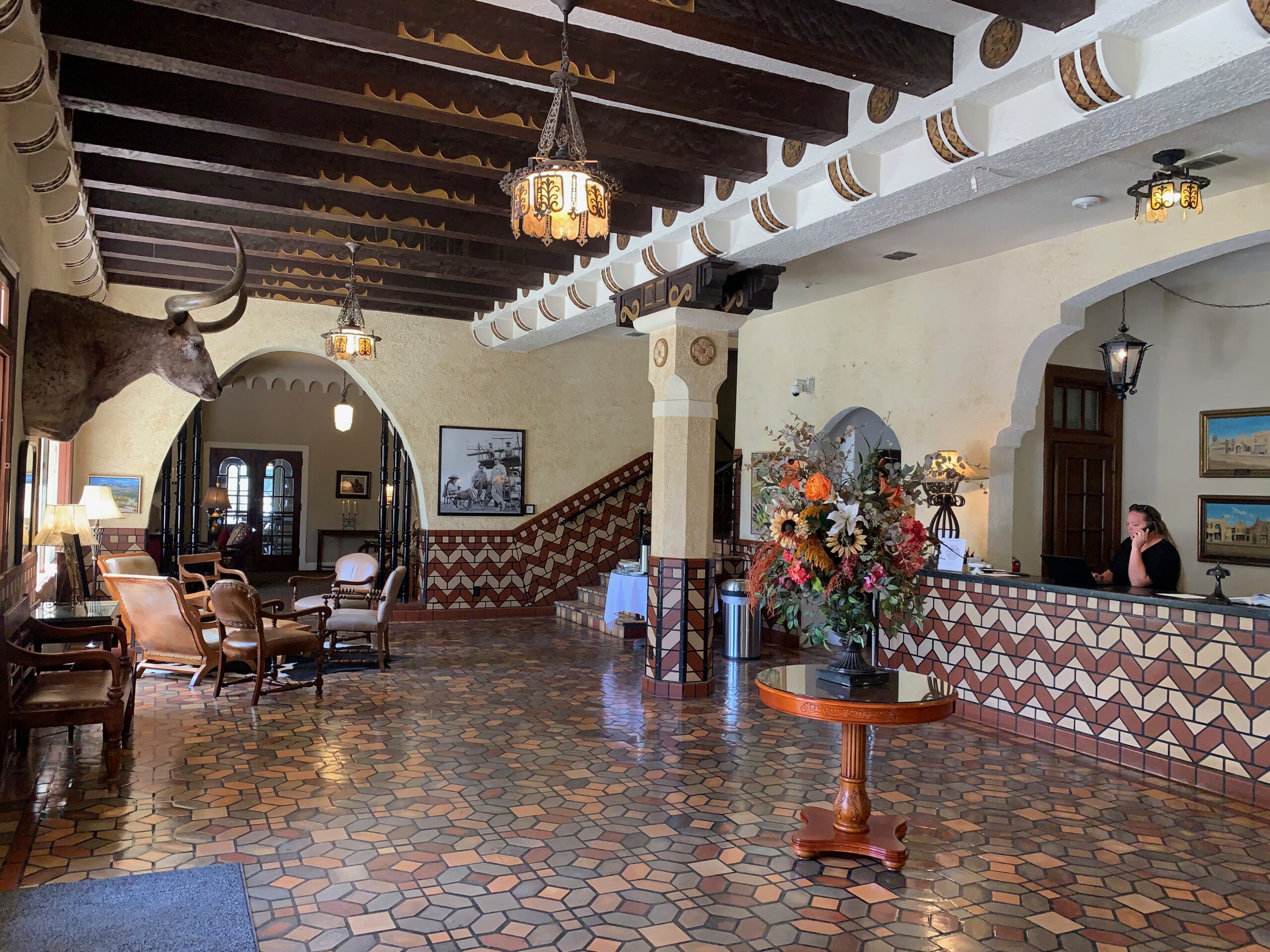
The interior oozes charm: the foyer floor is tiled and the ceiling has exposed fat wooden beams. On the walls are the stuffed head of a bison and a Texas longhorn cow. There are tiffany lights everywhere and reminders that nearby, the film Giant was shot in 1955. It starred Rock Hudson, Elizabeth Taylor and James Dean, who died in a car crash half way through production. A plaque on the hotel wall tells how it was built “in anticipation of a local oil boom that never materialized”. And it has sat there ever since, waiting for that boom, any boom to come along but none has.
I camped two nights in nearby Ford Davis before heading for El Paso, turning south off the freeway at a place named Fabens. I wanted to see that fence up close.
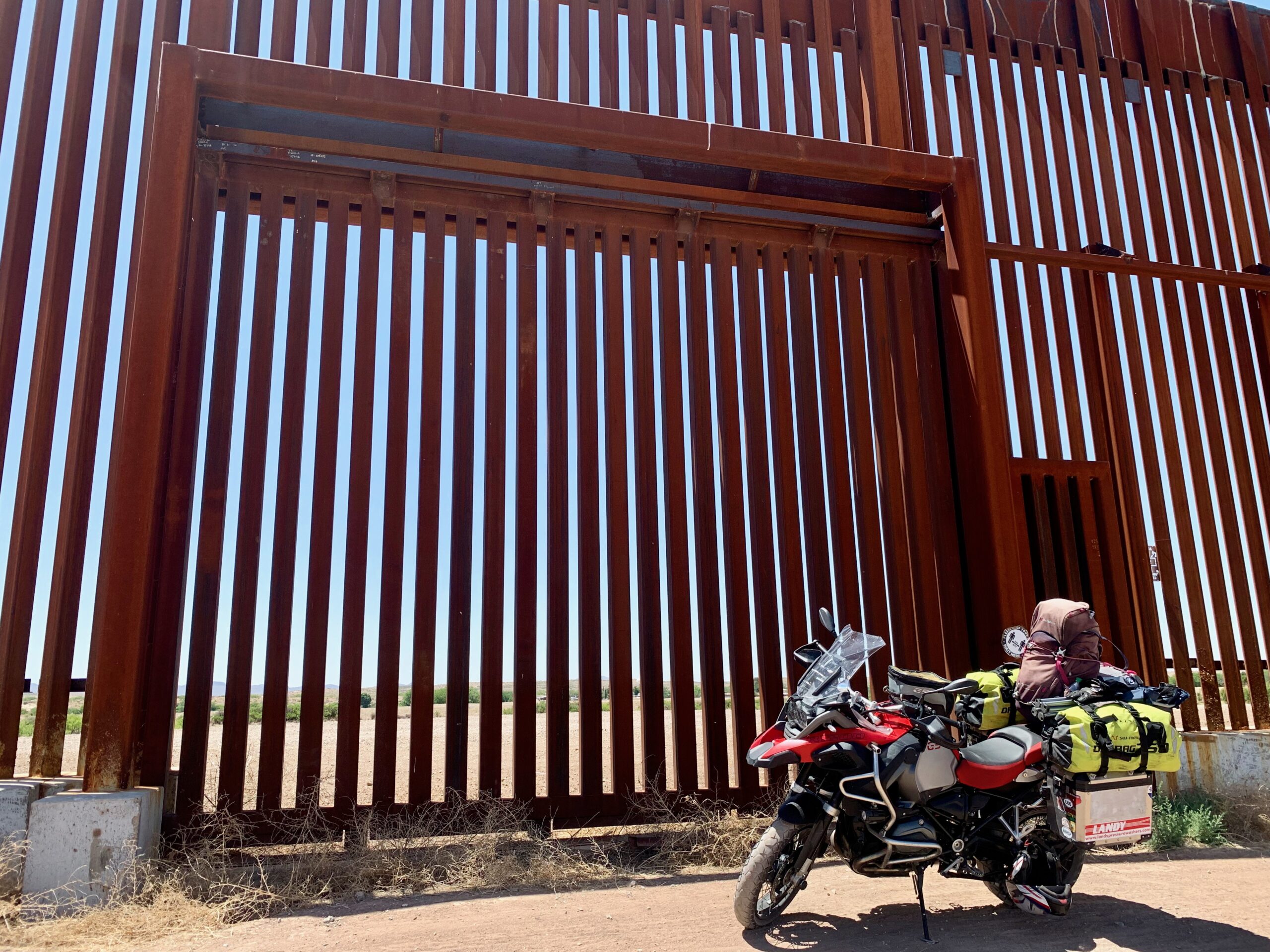
The land from Fabens — nothing to report about it, safe to say, — to the fence was flat and the soil was dust bowl powdery dry. Every now and then, a serpent of wind would whip some soil up into the sky, into a spiral that danced across the landscape before collapsing again when the wind blew itself out. Fabens Island road ran straight down towards the frontier before, at a cross roads, running out of tarmac and turning into a dirt track, Jess Harris Road, than ran right up to the fence, where it stopped dead.
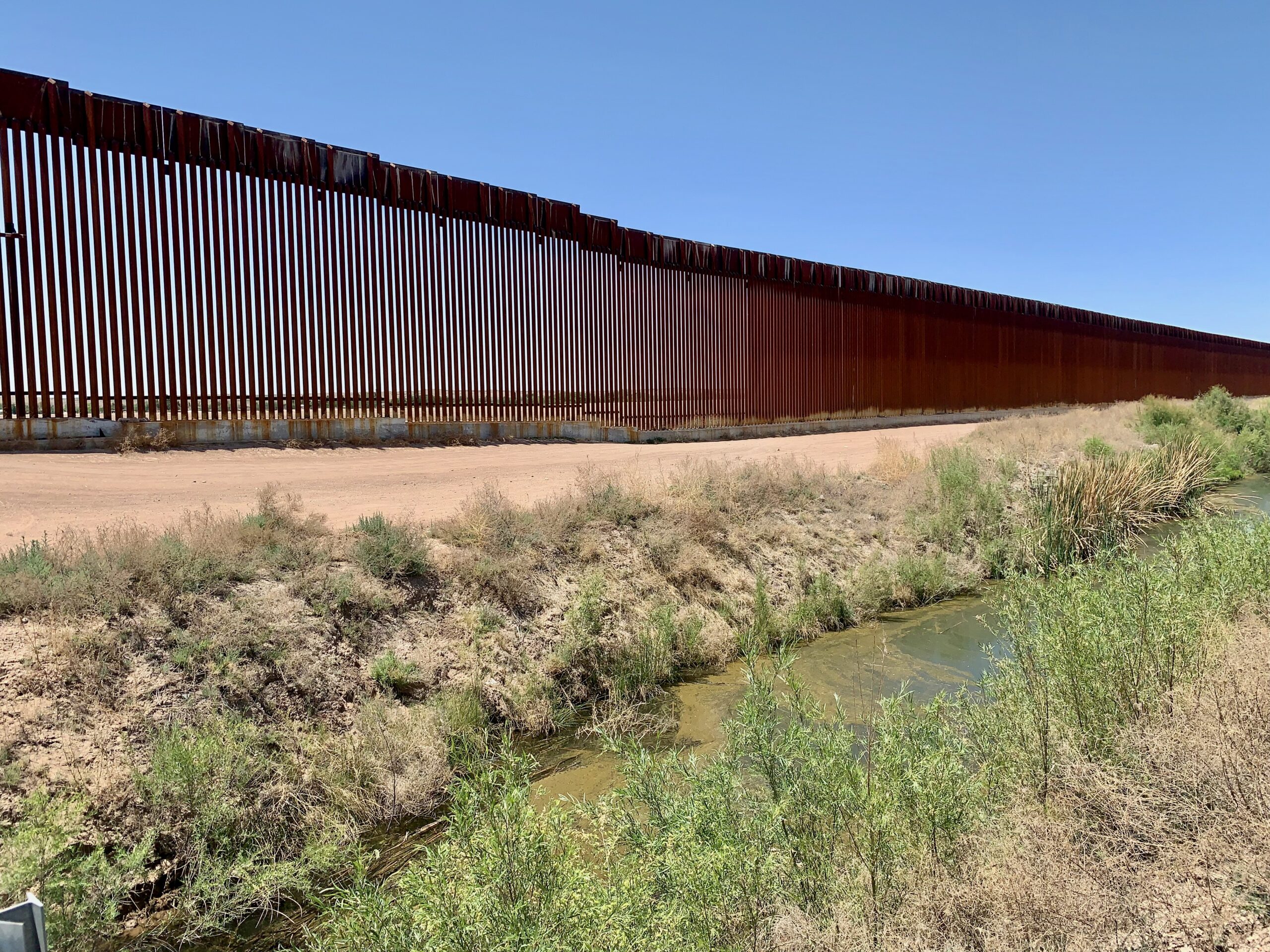
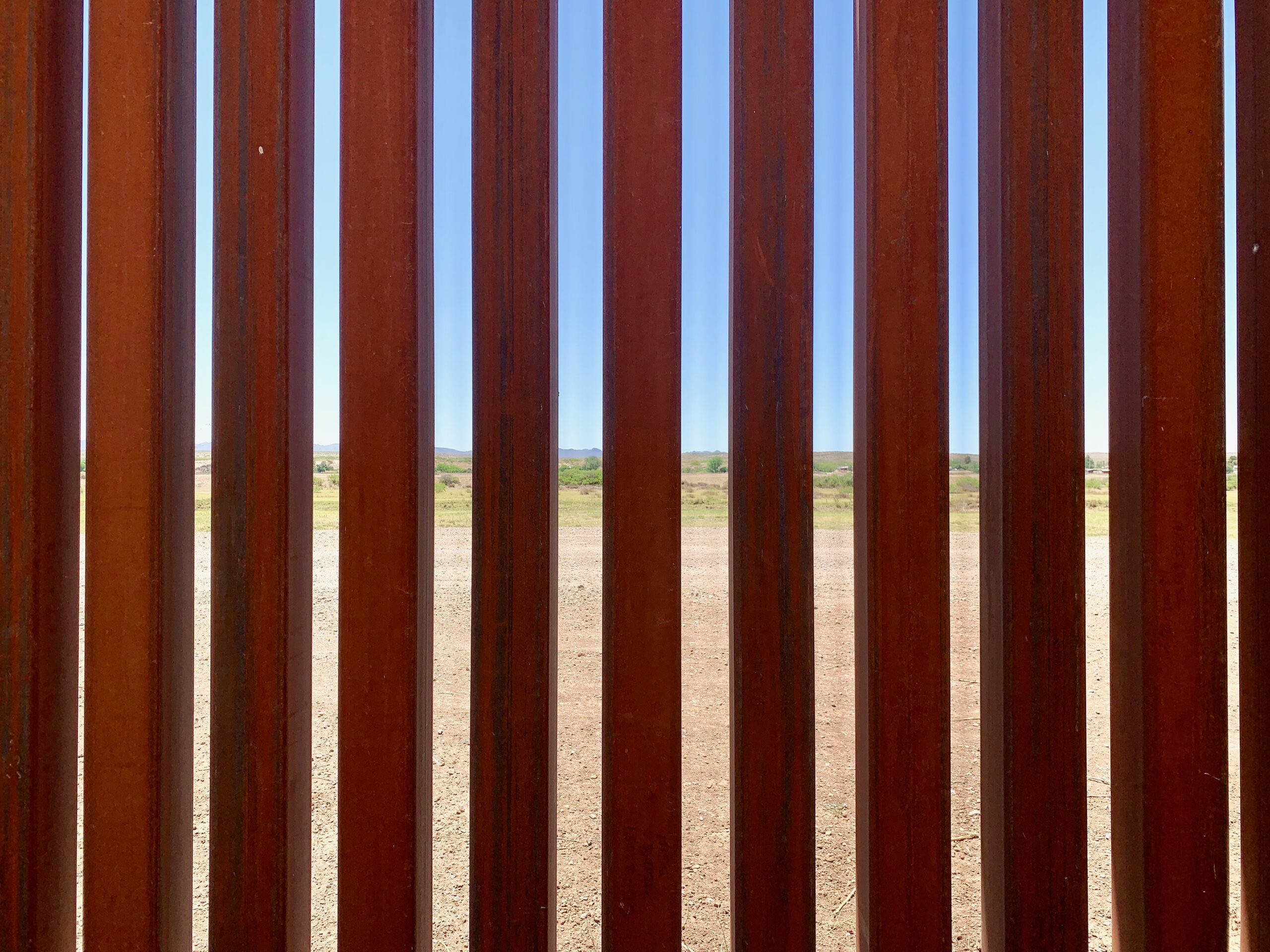
The fence is massive — about 30 feet high by my reckoning — and is made of tightly packed thick metal squares, set into concrete and topped off by a sort of solid panel. There was no barbed wire or watch towers or cameras at the section I examined, and no one patrolling it, on either side. But it was huge, somewhat intimidating and had a sinister feel to it — whether by virtue of its size or that the metal is now rusted dark brown. It winds its way as far as the eye can see and goes on for over 700 kilometres, much of it a monument to the politics of Donald Trump.
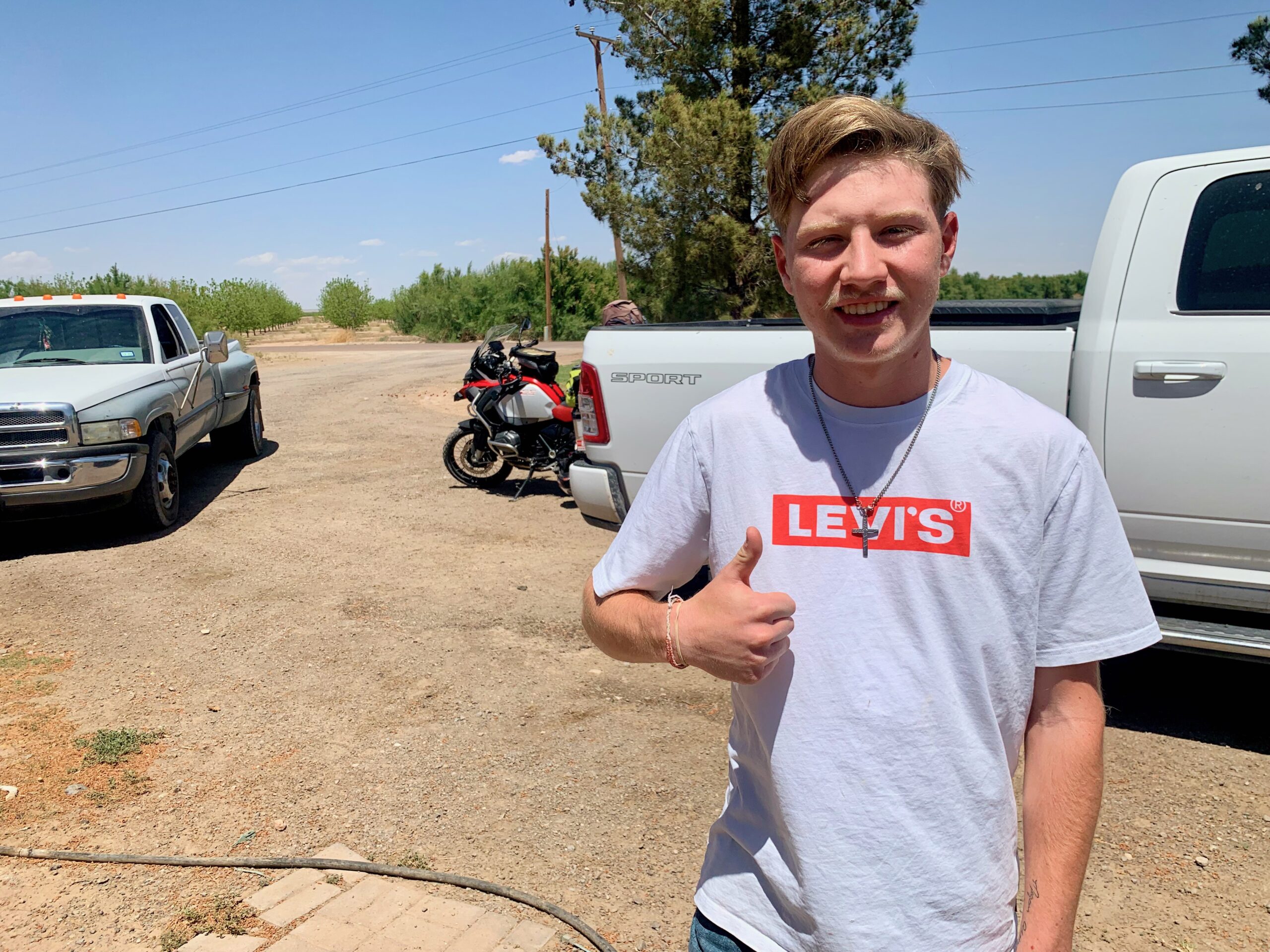
“It used to be smaller and then they made it taller ’bout a year ago,” 17-year-old Wyatt Alshouse told me. “The smaller one was there since I was little.”
Wyatt lived with his parents and younger brother on a small holding just by the fence. He drives a tractor, ploughing and harrowing for one of the larger land owners. The fields are given over mainly to pecan trees but they’re ploughing to sow cotton just now as well. How long since it rained, I asked him. “I can’t even remember,” he replied. “It’s like summer every day.” There are irrigation canals around moist of the large fields and when they want to water the pecan trees, they just flood the whole field. “A few years ago, they used to plant corn but not so much now.”
Did many Mexicans cross over the fence, I asked him.
“Not much any more,” he said. “It used to be really bad.”
Nearby there was a cemetery, with a wall and entrance in the Mexican style, and opposite it, a small church that looks like it doesn’t get much use. All around the area, right along the length of the border and into El Paso, the culture, the feel of the place is Mexican and American. Whatever mixing there was in the past, however much migration south to north there was too, has been severely disrupted by the giant fence but probably not stopped altogether.
First published by The Irish Times on April 29th 2023.
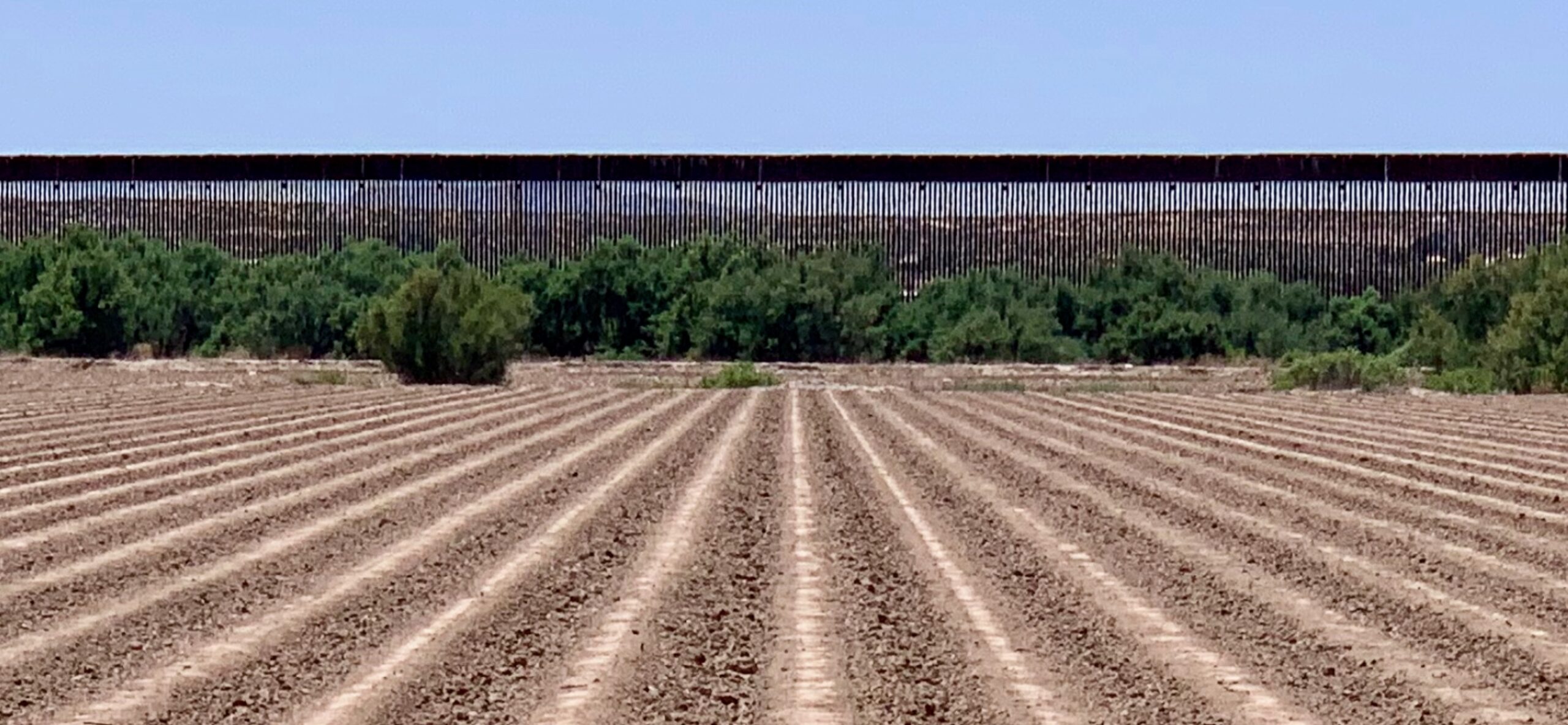
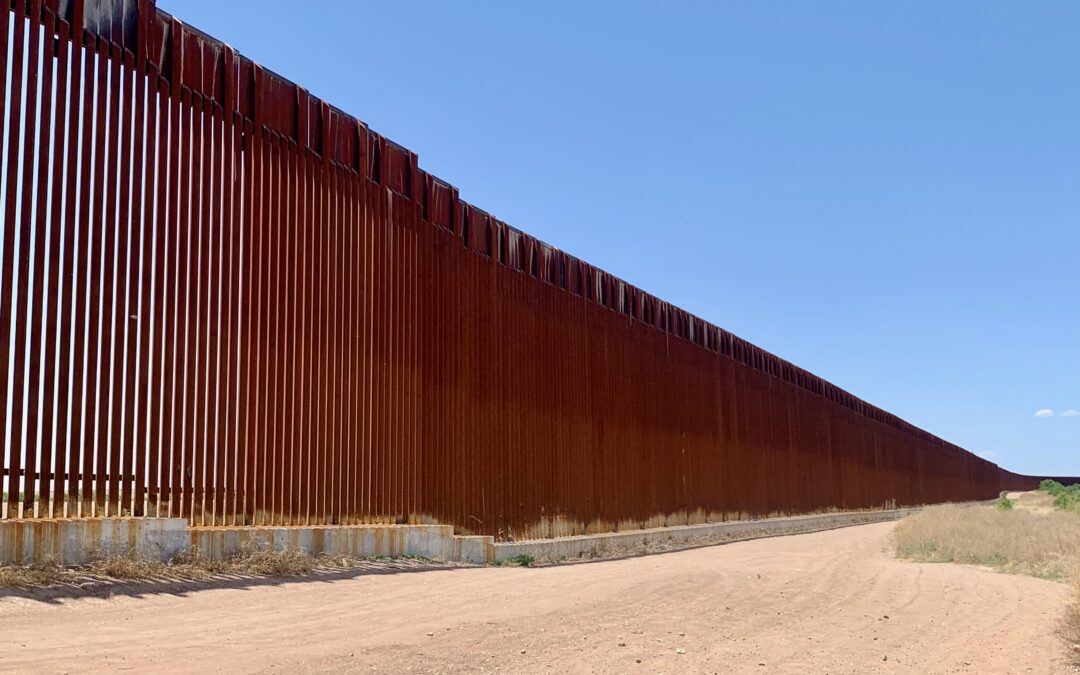
Excellent piece, again. Young Murtagh’s endless curiosity about life and people remains undimmed!
The materials for that fence could have built a lot of homes for the homeless.